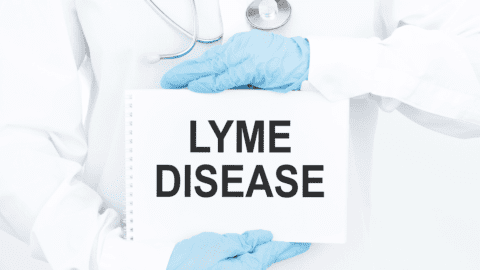Lyme disease, a bacterial infection transmitted by ticks, progresses through three distinct stages: early localized, early disseminated, and late disseminated. Each stage presents with specific symptoms; timely treatment is crucial to prevent complications. Below is an overview of each stage, its symptoms, and treatment options.
Early Localized Lyme Disease (1 to 4 Weeks)
Symptoms:
- Expanding circular red rash, often described as target-shaped
- Low energy
- Headache with a stiff neck
- Fever and chills
- Muscle and joint pain
- Swollen lymph nodes
Treatment: Treatment should begin as early as possible. The first line of treatment is typically doxycycline, an antibiotic in the tetracycline family, for adults and children over eight years old. For children, pregnant or breastfeeding women, and those allergic to tetracycline, amoxicillin (a penicillin antibiotic) or cefuroxime is recommended. Oral antibiotics are usually prescribed for 14 to 21 days.
Early Disseminated Lyme Disease (1 to 4 Months)
Symptoms:
- Widening rash and possibly further rashes
- Pain, numbness, or weakness in the extremities
- Recurring headaches or fainting
- Poor memory or concentration
- Pink eye (conjunctivitis) or deeper eye damage
- Pain, redness, and swelling in the knee and other large joints
- Fast heartbeats or more severe heart issues
Treatment: Similar to the early localized stage, early disseminated Lyme disease is treated with oral antibiotics for 14 to 21 days. In some cases where the infection has spread to the central nervous system, intravenous (IV) antibiotics may be required for 14 to 28 days.
Late Disseminated Lyme Disease (Months to Years)
Symptoms:
- Arthritis in the knee or other joints
- Numbness and tingling in hands, feet, or back
- Chronic tiredness
- Weak facial muscles
- Insomnia, mood swings, memory issues, or speech difficulties
- Heart problems, including pericarditis (inflammation of the heart’s outer lining)
Treatment: Late disseminated Lyme disease requires a more intensive treatment approach. Patients may need extended oral or IV antibiotic courses to eradicate the bacteria. The treatment duration and specific medications will depend on the severity and location of the infection.
Note: Late disseminated Lyme disease is rare and should not be confused with ‘Chronic Lyme,’ a term used by some to describe persistent symptoms after treatment but not recognized as a distinct medical condition by the majority of the medical community.
Where to Get Treated for Lyme Disease
Most primary care doctors and urgent care clinics can treat early localized and early disseminated Lyme disease. However, if you find yourself in need of access to a primary care doctor on short notice, QuickMD is here to help. Our doctors can provide consultations and prescribe antibiotics via phone or video, and send the prescription to your preferred pharmacy. We’re here to support you in your healthcare journey.




